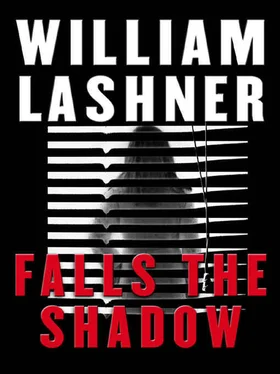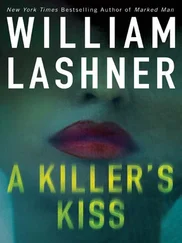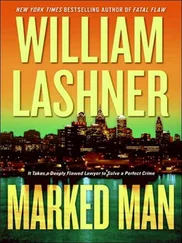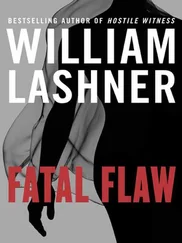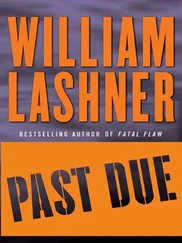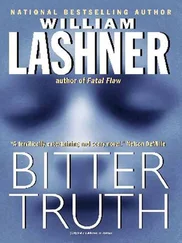The photographs were passed around the jury box, hand to hand, mouths tightening at the posture of the body, at the spill of the blood. Leesa Dubé in her bloody T-shirt, her right arm twisted beneath her lifeless body, the blood splattered across her face and forming a pool around her head in the shape of a lopsided heart. The jurors sneaked glances at François as they examined the photographs. His mouth was twisted as if he had eaten an overcooked steak au poivre.
And then Dalton began with the meat of her case, fingerprints and blood.
The Crime Scene Search officers testified as to how they had processed the crime scene, as to where they had found the fingerprints they’d lifted, as to where they had found the blood. And then they testified as to their search of François’s apartment the day after the murder, pursuant to a request by Detective Torricelli, and what they had found there.
“Officer Robbins,” said Dalton, “did any latent prints you found in Leesa Dubé’s apartment match any of the inked impressions given to you by the detectives?”
“Yes, ma’am. We found matches to two individuals.”
“Go ahead.”
“We found a number of prints matching those of the victim and four others, two found on a wall switch, one on a door, and one on a table, that matched up with the prints of the defendant, François Dubé.”
“Did you find any other prints that matched those of the defendant?”
“Yes. There were two latent prints found on the cartridges loaded into the revolver found at the defendant’s apartment.”
“The revolver that was introduced as People’s Exhibit Six?”
“That’s right, the gun found in Mr. Dubé’s apartment that was determined to be the murder weapon.”
A nice dramatic moment for Dalton, but not so hard to deal with. Before the divorce, François had lived in that apartment, before the divorce, the room would have been filthy with François’s fingerprints, as would the gun, which he had purchased and loaded and given to his wife.
“Now, Officer Robbins,” I said as I stood before the technician, “the prints you discussed with Ms. Dalton, coming from the wall switch and the door and the table, were latent prints, were they not?”
“That is correct.”
“There were no visible prints at the crime scene that you were asked to test, is that correct?”
“That’s right.”
“A visible print would be a print that was made, let’s say, after the murderer had accidentally gotten the blood of the victim on his fingers and then touched something, so that the print was visible without special techniques.”
“Right.”
“But even with so much blood, there were no bloody fingerprints at the crime scene that matched the defendant. All you had to work with were latent prints.”
“That’s right.”
“Are you able, Officer Robbins, with any of your fancy tests or super-scientific instruments, to determine the age of a latent print?”
“No, sir.”
“The prints on the wall switch, for example, could have been there a week, a month, maybe longer?”
“That’s right. Latent prints have been known to survive, in certain conditions, for years.”
“For years,” I repeated, and then repeated again. “For years. Fascinating.”
“Of course, they are usually removed with cleaning.”
“I suppose they would be,” I said, nodding, as if the officer’s interjection was thoroughly welcome. “And we all know, Officer Robbins, how often we all scrub our light switches clean. Scrub, scrub, scrub. Did you find any latent prints at the crime scene or on the outside of the murder weapon that you weren’t able to match up?”
“There were no prints on the outside of the gun. It had apparently been wiped clean, possibly by the shirt that was wrapped around it when it was found.”
“Wiped clean and then left at the defendant’s apartment until it was conveniently discovered by Detective Torricelli?”
“Yes, sir. But there were numerous prints at the crime scene we could not identify.”
“They could have been the prints of anyone, isn’t that right?”
“That’s right.”
“A friend, a lover, the real murderer, or maybe all three in one?”
“We couldn’t match them up.”
I looked at the jury, raised an eyebrow. I work on that in the mirror at home, the one raised eyebrow. It should be a course of its own in law school. You sort of have to relax one half of your face, contract the muscles on the other, all while keeping a sweetly sardonic expression. You do it wrong, you look like you just ate bad jalapeño. You do it right, it denotes skepticism, it denotes shared knowledge, it was as good as shouting to the jury. I raised my eyebrow, they thought of my opening and of Leesa Dubé’s as-yet-unnamed lover.
Not bad, but that was just the fingerprints.
The more difficult evidence to explain away was the blood. There was blood everywhere at the crime scene, on the victim, on the floor, on the walls, gouts and gouts of blood, but that wasn’t the blood that concerned us. No, the blood that concerned us was found in François Dubé’s apartment after he was arrested and a search was conducted by Detective Torricelli incident to the arrest.
“All right, let’s talk first about the shirt,” I said during my cross-examination. “This white shirt that happened to be discovered by Detective Torricelli, the one balled up in the corner of the defendant’s closet, wrapped around the gun. You examined this shirt yourself, did you, Officer?”
“Yes, I did.”
“And you found the blood smeared on the front?”
“That’s correct.”
“And this blood you determined to be the blood of the victim?”
“Correct.”
“And so we are to assume that this shirt, this white shirt, the most popular color for criminals about to pursue a criminal act, was worn during the murder.”
“I don’t know what you are to assume. I just testified as to what I found on the shirt.”
“You testified you found a single smear, with a repetitive transfer pattern created, as you testified, by the balling up of the shirt.”
“That’s right.”
“Now I’d like to show you photographs from the crime scene. This photograph, People’s Exhibit Twelve, for example, showing a close-up of the victim’s face. What do you see on her cheek?”
“Something dark. The photograph is in black and white, but it appears to be blood.”
“Is it a smear of blood?”
“No, sir. It appears to be a series of droplets.”
“And this picture here, People’s Exhibit Fifteen. What do you see on the wall?”
“Blood.”
“Droplets of blood in a specific pattern, isn’t that right?”
“Yes, sir.”
“And this one here, People’s Exhibit Nine, a pattern of droplets on the floor?”
“That’s what it shows.”
“Now, droplet patterns are very valuable in investigating a crime scene, aren’t they?”
“They can be.”
“In fact, you are trained to examine these patterns of droplets to determine direction of travel or the location of the blood source, isn’t that right?”
“Yes, we are.”
“So what did the pattern of droplets on this shirt tell you, based on your training?”
“There was no pattern of droplets on the shirt.”
“No pattern, then, just the droplets?”
“There were no droplets. Only the smear.”
“But from these photographs it seems what happened was pretty clear. The victim was shot, and blood started flying all over the place. Droplets hitting everywhere.”
“Not everywhere.”
“Hitting the walls, the floor, the victim, everywhere we can examine with the camera. But in this maelstrom of blood, we’re to believe not a single speck landed on the white shirt the defendant was wearing while he went about the process of murdering his wife? Because, based on your testimony, there were no spots, no splatters, not a single droplet.”
Читать дальше
